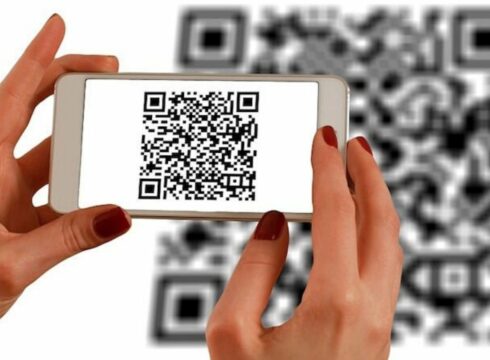SUMMARY
Earlier millions of businesses were static in place
Device-less payment acceptance satisfies new generation customers with a seamless payment experience
Offline/device-less payment allows customers to pay even when they do not carry their wallets
Inc42 Daily Brief
Stay Ahead With Daily News & Analysis on India’s Tech & Startup Economy
Mobile technology in the modern age is overtaking the conventional payment modes which are opening doors for businesses to virtually accept electronic payments anytime anywhere. The impact of device-less payment acceptance is evident in the manner in which this technology is empowering small businesses to gain huge advantages.
Earlier millions of businesses were static in place. While shopping customers used to pay cash or via credit or debit cards at the payment counters of the stores. Advanced technology has paved the way for newer mode of payments. Accordingly, the payment ecosystem has evolved and device-less electronic payment modes have gained prominence for physical stores as well as for businesses on the go.
We are living in the age of technology and mobile solutions where commerce takes place everywhere. Businesses and merchants habitually operate outside their stores. For every business, it is paramount to meet customer service expectations and primarily when it is concerned with their choice of payment mode.
In the digital age, shoppers expect freedom to pay via debit cards, credit card and several eWallets including Apple Pay, Samsung Pay, Google Pay, and more, irrespective of the place they are paying.
Device-less payment acceptance satisfies new generation customers with a seamless payment experience. Mobile devices such as laptops, smartphones are becoming the new destination to run business.
Capturing Mobile Payments
Offline/device-less payment allows customers to pay even when they do not carry their wallets. They can simply use their smartphone with a wireless near-field communication terminal to immediately make payment.
However, linking the credit card to the mobile payment app is mandatory to avail this easy payment mode. For merchants, it is not required to authenticate the security code or expiration date on the card as everything is already stored in the customer’s mobile.
Relevance Of Accepting Mobile Payments
Although the younger generation prefers device-less payments, a number of people still choose to pay without their smartphones. Over a period of time, the trend is catching up. The credit for this change in trend goes to the ubiquity of smartphones with NFC feature.
While mobile payments manage to remain a niche option of payment for most customers, various experts claim that the model is likely to dominate in the coming few years. According to a report from research firm Forrester, mobile payments will increase three times to the current scenario by 2021 in the US. It is expected to reach up to $282 Bn in sales that year. This supports that mobile payments are soon going to set a standard point-of-sale choice for retailers shortly.
Who Needs Mobile Payments?
Small businesses, supermarkets, brick and mortar retailers are amongst the entities that stand to gain an advantage by accepting mobile payments. The new technology is capable of swift transactions and optimized customer experience in several ways. Furthermore, it can reduce fraud liability for millions of businesses.
Benefits Of Device-less/Offline Payment Acceptance For Merchants
- Receive digital payments without the use of PoS Terminals; low infrastructure requirement, low expense
- Payment takes place via IMPS; Instant credit to their bank accounts
- Consumers and merchants might be able to avail tax incentives for digital payments through QR Code on United Payments Interface (UPI) from next year as per NPCI’s newest proposal on 11th Sept’19
- Merchants do not have to pay any Merchant Discount Rates (MDR) on UPI transactions below the ticket size of Rs. 100 that is done through QR Code ‘Scan and Pay’ effective October 1 as per NPCI
- Bank details not required in case of UPI payment: Stress-free
- Universal: One UPI App works for many bank accounts
Benefits Of Device-less/Offline Payment Acceptance For Consumers
- Convenience: No need to carry your wallet, plastic cards, or even queue up for ATM withdrawals, safer and easier option while traveling, most convenient in case of emergencies, a physical presence not required
- Discounts: To promote digital payments, the government provides various discounts, freebies, and incentives; multiple sorts of reward points, cashback and loyalty benefits can also be enjoyed Service tax, fuel, rail tickets, rail catering, highway toll, insurance are key sectors where customers enjoy discounts on digital payments.
- Tracking spends: All transactions are on record, therefore, easy to track. Ease in filing income tax returns
- Budget discipline: Apps and tools help analyse spending patterns and keep tabs on spending
- Small Gains: Easy to ward off borrowers, can pay the exact amount without worrying about having change or getting it back from the shopkeepers
Deviceless payment technologies are picking up pace, with customers accepting them rapidly by every passing year. Such platforms turn to check out faster, simpler and are perceived to be potentially more secure as compared to traditional modes of payment.
But if upgrading hardware and software are costing you high then it is better to hold off on adopting a completely contactless payment system. After all, conventional payment modes are not going to vanish out anytime soon and you are not going to lose a business sale by accepting payment only in cash or by cards.
Note: We at Inc42 take our ethics very seriously. More information about it can be found here.


